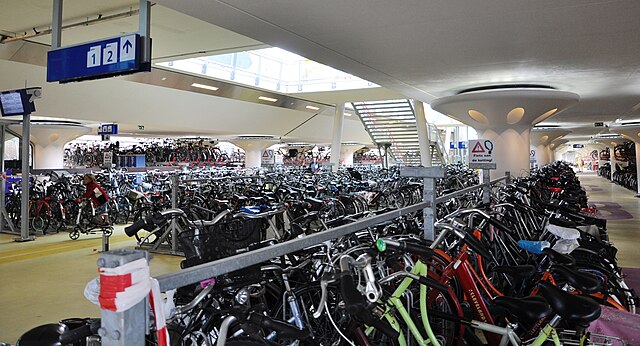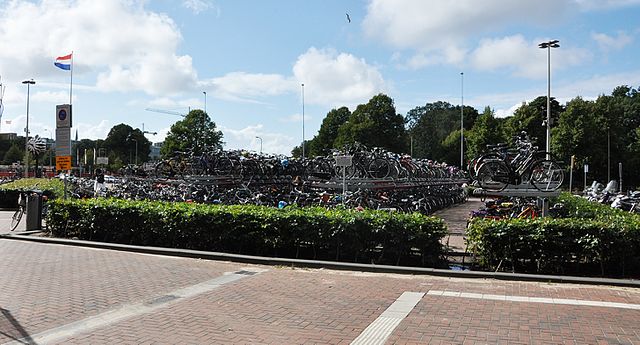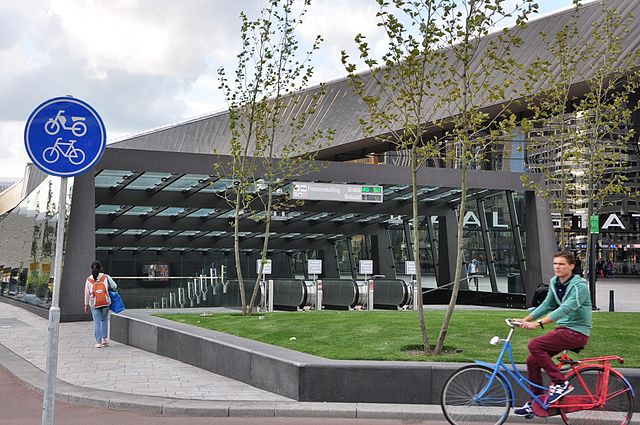The issue with cycling is that the vast majority of the population who would even consider cycling in the first place will not do so during the winter, nor for that matter colder fall/spring months, nor in the rain or on very hot days etc. So the people who cycle, except for 5% or maybe even less who will do it no matter the conditions, will use it about 6-8 months of the year, maybe about 75% of the days of those months? So we need a working system for the times they don't bike, and at that point they're likely to just use local transit year round.
Obviously fewer people cycle in the cold, or in the rain. But the same is true with walking, yet we still provide sidewalks to and from stations. Because while there are some people who will stop walking/cycling in various conditions, there are others who would continue doing so, if the infrastructure made it practical.
Of course no one is going to cycle in winter if it's on-street. But I've been commuting riding year round by bike in Waterloo, and it's really not a big deal when it's on a separate bike path. In fact, I find cycling in winter much nicer than cycling in spring because it almost never rains (you don't get wet from snow), and the dry air means you can ride faster without breaking a sweat. When you dress warmly (coat, scarf, hat, etc), the cold isn't really an issue until it drops below about -15, at least for short commutes like mine. Which means that there's only one month per year when it's frequently uncomfortable to cycle. Here are some snapshots of my commutes this winter.
In fact, here is a picture from the way home from Kitchener GO station on the day of a snow storm.
That morning on the way to the station I encountered a portion of bike path that hadn't been cleared, requiring me to walk part of the way, and as a result I almost missed the train. But it could have been worse. At each station there were lots of people who did actually miss the train, likely because it took them longer than expected to drive.
If people do chose to cycle only part of the year, would it be worth owning a car only for the remainder? If not, then cycling to the station part of the year could cause them to put up with relatively uncompetitive transit in winter, which has the same end result in terms of station parking.
As for rain, that doesn't seem to dissuade people from cycling in other countries. When I was in the Netherlands for two weeks, it rained almost every single day, but there were still plenty of people cycling. It's worth noting that with a high enough quality of infrastructure, you can cycle with an umbrella, thereby making riding in the rain relatively pleasant. In the Netherlands, the bicycle is the primary means of access to train stations. Here are some of the bicycle parking lots and garages I found around train stations there:
Houten station (one of two stations serving a town of 50,000 people) - 3,000 indoor bicycle parking spaces
Overvecht station (a minor inner-suburban station in Utrecht)
Den Haag Centraal (bicycle parking garage on one side, bicycle parking lot on the other)
Rotterdam Centraal: 5,190 indoor bicycle parking spaces (sign indicates that 933 are free at the moment)
Utrecht Centraal: 4,000 space public parking garage as well as many outdoor parking lots and privately-operated garages. A 30,000-space garage is also under construction.
The central stations all have very good transit access, so the fact that most people are still cycling inherently means that they consider cycling to be a better option. In the effort to reduce car parking demand at GO stations, we shouldn't dismiss a transportation mode that could potentially become people's preferred alternate means of access.
Also, for a lot of the suburban stations, it's not necessarily a matter of distance or of having nice bike lanes, but of uphills. Like I said, my station is a constant, not-insignificant (to me) uphill the entire ~10-minute ride, which is something that I'm not interested in attempting--I don't do well with hills, and I'd rather not ride the train smelling awful the whole way then have to get a gym membership downtown and take a change of clothes every time due to a harsh uphill ride (again, I'm not a professional/experienced cyclist, I'm a recreational cyclist--like most GO commuters I'd imagine).
An uphill ride to the station is indeed annoying, though it becomes less of an issue if infrastructure is separate from cars. When riding on-road (including in bike lanes), there is an inherent pressure to ride briskly. But when away from cars, people are more able to ride at whatever pace is relaxed. Your sweaty 10 minute ride is probably also a leisurely 15 minute ride.
An uphill ride home from the station is presumably less of an issue, and I find it hard to believe that every GO station is at the top of a hill.














